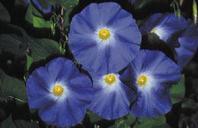Howard Moo Young, Contributor

ALL PHOTOGRAPHS OF 'MORNING GLORY' BY HOWARD MOO YOUNG
The eye has played an important role in the choice of angle, composition and lighting of these images. The photographer also had to decide on the type of lens to shoot with and the use of the polarising filter or not. All of these decisions help to create the impact of each frame.
The camera does not 'see' the way the eye sees. To photograph well, it helps to understand how the camera 'sees'. Here are a few of the most obvious differences:
EYE CAMERA
1. Selects and censors: sees what it See everything indiscriminately: Has
wants to see. no 'wants'.
2. Small, sharp centre of attention: No centre of attention because there's
must scan to see any large area. no centre of attention. Sees whole picture
at once without scanning.
3. Automatically focuses most sharply Deliberate mechanical focusing on any
on what interests you. Little control distance both possible and necessary.
over focus except by choice of what Having no interests, the camera makes
you look at. no choices.
4. Sees sharply in centre of field, less Sees with nearly equal sharpness over
sharply toward edges; but perceives entire field. Does not perceive motion or
motion most clearly near edges (the anything else (eye of a machine).
eye of a hunting animal).
5. Sees movement as travel across Records movement as a path across space,
space during time, in a continuous all at one time as seen in the picture, or
flow. denies movement by recording only one
position of moving object. Static, no flow.
6. Sees continuously. Sees intermittently, typically for one
isolated moment at a time.
7. Sees in a complex range of 'natural Sees in a range of greys or in a restricted
colours' which interact subjectively set of three dye colours. Colour is recorded
(for instance, neutral grey next to objectively in photographs, though the eye
yellow 'looks blue' and next to red sees the colours in photographs subjectively.
'looks green')
8. Sees an immense range of brightness, Records a much smaller range of bright-
from bright light to total darkness. nesses than eye sees.
9. Two-eyed vision sees space in Execpt in stereo photography and holo-
Stereo 3-D. graphy, one-lens viewpoint 'sees' space in perspective on a flat surface.
10. Rounded, soft-edged field of view Arbitrary hard-edged rectangular field with vague boundaries: edges is usual. Geometric edge has great visual generally not noticed. power and affects the inside area of the picture strongly.

